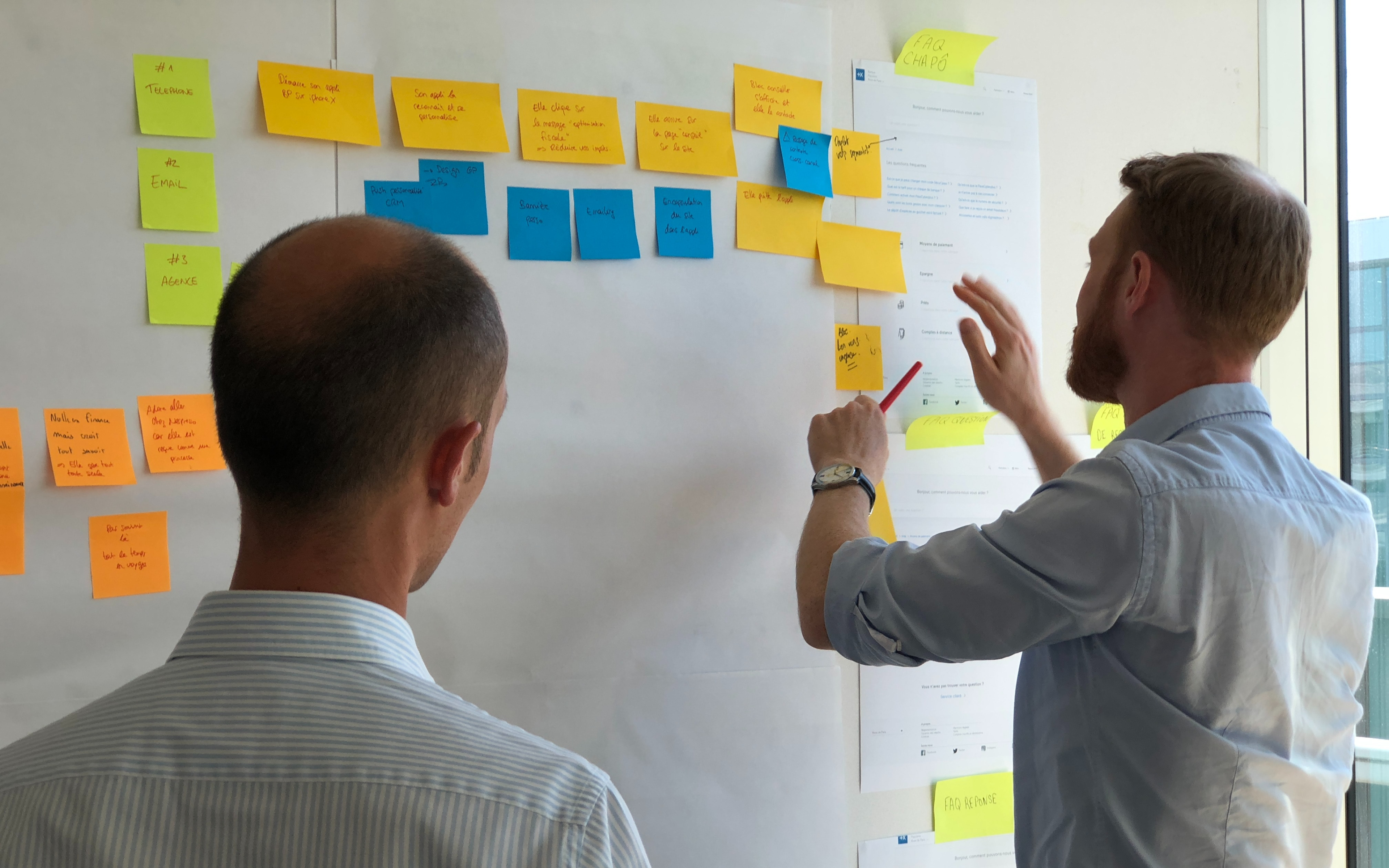5 Steps to Successful Startup Product Development

The process of developing a new product begins with an innovative idea and progresses to a launch, but there’s more than one right way to approach all the steps in between. Regardless of what your process looks like, it’s important to stick to a structured development plan if you want your product to succeed. We can break down the typical structure of product development processes into five main steps:
- Ideation
- Market Validation
- Prototyping
- Beta Testing
- Commercialization and Launch
No two product development cycles are exactly alike, and the precise series of steps you’ll take to create your product depends largely on what kind of startup you have. Nevertheless, these five steps form the core of nearly any effective product development process. Let’s take a more detailed look at what each of these steps entail:
1. Coming Up With an Idea
Every product starts as an idea. You may already have your product idea, but if you don’t, brainstorming (preferably with a product development team) is a great way to kickstart the idea generation process. The brainstorming stage should be a time when everyone feels comfortable contributing their thoughts without any fear of judgment.
The best way to come up with new product ideas is to think of existing problems that need solving — sometimes, the best products are those that meet needs people didn’t even realize they had until they heard about the solution.
The ideation stage usually begins very broadly while you’re still trying to match a problem and a solution. Before too long, however, you should begin to narrow your idea into something you can describe in more concrete terms. You’ll know you’ve fully solidified your idea and are ready to move on to market validation when you can clearly and concisely explain your product’s main purpose (what problem does it target?) and how it provides value to users (how does it solve the target problem?).
2. Validating Your Idea in the Market
Validating your idea in the market means finding out if anyone is actually interested in buying the product you want to sell. The first step to answering that all-important question is determining a need. You’ve likely already completed this part in the previous concept development step. In order to come up with your product idea, you’ve recognized a need experienced by a significant group of people and you’ve dreamed up a new product that will meet that need.
Next, you need to determine who your target audience is. Again, you likely already have some idea of what problem your product solves and for whom. However, now is the time to test your theories and find out for real whether or not your intended target audience is interested in your solution.
How to Find Your Target Audience
You can use focus groups, surveys, and market research (for example, researching who your competitors’ best customers are) to discover which group(s) of people have the greatest interest in your product.
Here are a few tips for conducting more effective market research to validate your product idea:
Talk to your network: Before you start looking for insights from strangers, consider the relevant opinions that are right in front of you. Reach out to anyone in your network who knows about your industry and ask for their feedback. Just be sure you’re getting honest feedback, not sugar-coated answers.
Start conversations with users: It’s crucial to get feedback from as many of your early users as possible to help you gauge interest in your product. However, you should strive to hold conversations, not interviews, with your users; don’t stick too closely to a script but encourage them to open up about their experiences in a natural and open-ended manner. This is the best way to get honest insight into whether or not people would buy your product.
Keep asking “why?”: It’s not enough to find out that someone is interested or not interested in your solution — dig deeper to get to the actionable feedback underneath the “yes or no” verdict. Finding out not just who is interested in your product but also why they’re interested allows you to tailor your product development to better meet your ideal audience’s needs.
You might ultimately discover that your actual target audience looks different than you anticipated — that’s okay. It’s important to adapt your business plan to your market validation findings rather than try to force your product to fit into the market you initially thought it would.
Conducting a Market Analysis
Finally, you should conduct a market analysis to determine how your product will fit within the current market environment. A market analysis seeks to answer questions like “how large is my target market?” and “who are my closest competitors, and what are their strengths and weaknesses?” You can use a tool like Crunchbase to gather data on your competitors and learn more about your industry’s landscape.
3. Designing a Prototype
Designing and building a prototype is one of the most exciting product development steps because it’s the first time you get to actually see the product idea start to turn into reality. Your prototype is not yet a full-functional product, but it's a mock-up of the final design that gives you something concrete with which to perform tests or gather feedback.
How to Build a Prototype
You can create your prototype yourself or outsource the task of prototyping to a third party. Usually, the prototyping step begins with a sketch, a blueprint, or even just a list of specific, essential features. New startups sometimes choose to then outsource the work of actually building the prototype because they may lack the required in-house expertise while the company is still very young. Alternatively, you can build your product yourself using dedicated software for prototyping. Here are few of the best prototyping tools for startups:
- Adobe XD: Adobe XD is a popular tool for designing web and mobile applications. It’s free, available for Windows and MacOS, and applicable to a wide variety of UI and UX prototyping needs.
- Figma: Figma is a great tool for collaboratively designing cloud-based web application interfaces.
- InVision: InVision is a convenient and powerful tool for drafting prototypes and quickly sharing them with other stakeholders. You can use InVision to quickly iterate on your prototype design.
Why Build a Prototype?
It’s important to build a prototype for multiple reasons. First and foremost, prototyping helps you determine whether or not the product you’ve designed is possible to create at all. This is the stage of the new product development process when you’ll be confronted with critical questions like the product’s technological feasibility and what types of materials or resources it will require.
Just as importantly, having a prototype ready is a distinct competitive advantage when it comes to securing investments or running focus groups. The ability to actually see or hold the product is a great way to sway potential investors, and your target audience will be able to give more helpful feedback if they have an understanding of the product that’s based in reality, not just theory.
As you iterate on your prototype, your product will begin to take shape. By the end of the process and the final iteration, you should have not just a prototype anymore, but an MVP (minimum viable product). Your MVP is the earliest version of your product that actually functions.
4. Beta Testing
You’ve done a lot of work thus far to validate your product idea and build a prototype — now it’s finally time to test it out. Beta testing typically overlaps prototyping, since you’ll be tweaking your prototype as you go according to the results of your tests.
Testing is not a one-time step, but an ongoing process that should be repeated each time you change or add to your product. Most startups start beta testing late in the prototyping stage and continue testing as the product moves through the MVP stage. Each round of beta testing should answer two main questions:
- Does the product function as intended?
- Does the product solve the problem it’s supposed to solve?
Functional Testing
Some testing can be carried out directly by you and your team. For example, your very first tests will probably be functionality tests to find out if the product works correctly. Some of the best tools to use for functionality testing include:
- Selenium: Selenium is an open-source testing framework for automating web application testing.
- TestComplete: TestComplete is a testing platform that allows you to automate GUI testing for desktop, mobile, and web applications.
- Kobiton: Kobiton is a testing platform for mobile applications that’s designed to accelerate product delivery on mobile devices.
User Feedback
Once you have a functioning product, answering the second question will require you to enlist the help of your target users. The best way to test whether or not your product adequately solves your target customers’ problems is to put a working version of it in their hands (either literally or figuratively) and solicit their honest feedback.
It’s important to make it as easy as possible for beta testers to provide feedback. One way to gather feedback is to hold in-person meetings with beta testers where they can tell you in detail about their experiences with the product. In many cases, a more practical method is to use beta testing software. For example, you can use a tool like UserTesting to gather feedback from testers or a tool like UXCam to record and analyze the way testers interact with and experience your product’s interface.
5. Managing Your Product Post-Launch
After numerous rounds of beta testing, your product will eventually be at the point of the product roadmap where it's ready to move out of the MVP phase and into the commercialization phase. At this point, you’ve received a ton of feedback on your product from real potential users and leveraged that feedback to hone your MVP into a finished product. You now have a fully-realized product that functions well and solves the problem it’s intended to solve in the minds of your customers.
Monitoring Your Product
It might feel like you’ve finally reached the end of the road now that your product is ready to launch, but in truth your work is just beginning. Introducing your product to the market for the first time is a huge step for your business — yet, even once you’ve connected with your audience and started selling a “finished” version of your product, you’ll need to carefully gauge the needs of your customer base and keep updating the product to make sure it continues to deliver maximum value.
Here are a few of the best ways to monitor your product after launching:
- Remain engaged with your audience. After you’ve launched your product, it’s more important than ever to listen to your customers and respond to their feedback.
- Create content around the product you’ve just launched. Publishing blog articles, social media posts, or other kinds of content is a great way to generate a point of contact for your audience that makes it easy for them to engage and learn more.
- Track essential KPIs like website traffic, conversions, and ad click-through rate. There are many types of business intelligence software that can help you track these metrics. A simple, free tool like Google Analytics is a great place to start.
Marketing Your Product
Of course, now that you’re selling your product in earnest, you’ll also need to invest time, energy, and resources into marketing your product. At this point, the focus will shift from product development to branding. Branding your product and marketing it to your target audience is a crucial process in itself, of which planning your product launch is one of the first and most important steps.
The promotional content you create for your product launch will be many of your future customers’ first impressions of your final product, so it’s important to make sure it has a strong impact. You can start generating buzz about your new features and product with tactics like paid advertising, SEO blogging, and free demos.
How to Find a Mentor for Your Product Development Process
The product development process is not an easy road. There will undoubtedly be setbacks and moments of frustration along the way, and it’s important not to let yourself become too demoralized. A mentor can support you throughout the process and help to keep you motivated.
One of the most challenging parts of accessing quality mentorship is simply locating a mentor who is a good fit for your needs. It’s important to find a mentor with relevant startup experience who can use their successes and failures developing their own products to help you develop yours.
Mentorcam makes it easy to connect with your choice of mentor by scheduling virtual meetings whenever and wherever it’s convenient. Check out our list of product development mentors and start receiving personalized advice in hardly any time at all.








